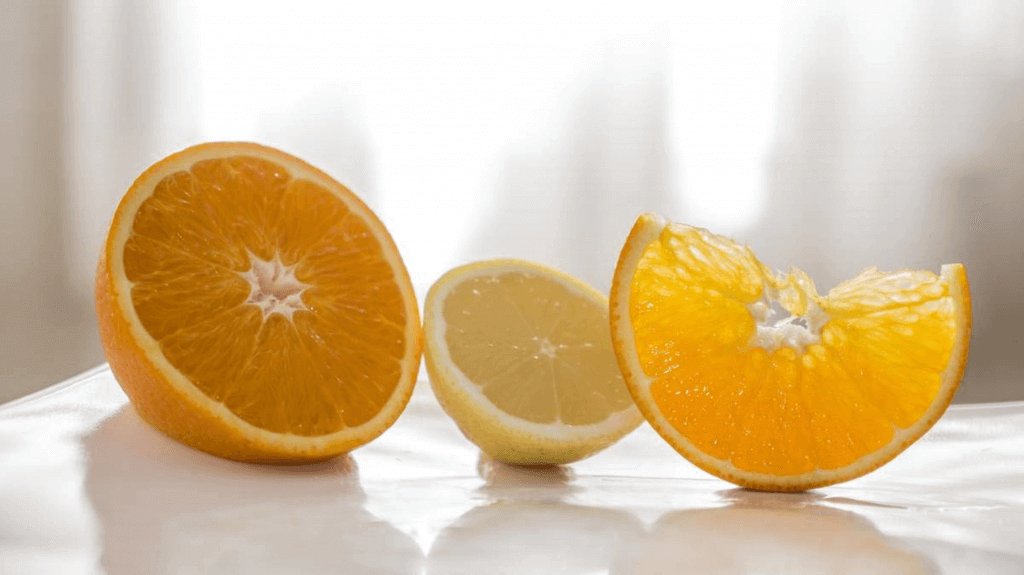Oranges and Lemons Day
Oranges and Lemons Day is observed next on Thursday, March 19th, 2026 (89 days from today).

Oranges and Lemons Day is annually commemorated on the third Thursday of March, even when Easter or St. Patrick's Day is interjected, at St Clement Danes Church in London.
History of Oranges and Lemons Day
The London rhyme is well known but what may be less known is that since 1920 it has been commemorated at the first mentioned church, St Clement Danes in the Strand, London.
This custom is related to Reverend William Pennington-Bickford, who restored church bells so they could play the tune of the rhyme. On the day they were blessed, they were also dressed in garlands of orange and lemon. He decided that all the parades on the day the bells were fully restored, March 31, 1920, a special service would be arranged and at the end each child would receive an orange and a lemon from the community. The city's Danish coin was distributed with Danish children dressed in their national colors.
Since 1923, there were a lot of rhymes that were sung with music were the child of Pennington-Bickford and his wife. The following year, the broadcast became nationally known as it was broadcast nationally and singing became a regular program.
In 1941 the church and its bells were damaged in a bomb explosion. However, despite this, the tradition continued and in 1944, despite the rations, 26 children received only one orange in the middle of the ruined building.
Oranges are not the only fruit
The only time I attended a service was in 1994, when I went to church and was greeted warmly. One of the teachers said that the best place to watch the ceremony was on the balcony and from there I watched the well-dressed children getting ready. At the start of the service, a group of parishioners played the tune on the bells again and the ceremony began.
Honestly, I can't remember much about the actual service but I do remember the kids taking part in a presentation. Sadly, it will be a special year in 2020 - its 100th anniversary.
How to celebrate Oranges and Lemons Day
Oranges originated around 2500 BC in Asia. In ancient Europe, oranges were grown mainly for medicinal purposes. As you know, Vitamin C is still considered a great cold remedy to this day.
Did you know that lemon is actually a cross between citrus and sour orange? Christopher Columbus is credited for carrying lemon and orange seeds on his travels, thus introducing them throughout the New World. Today, both lemons and oranges grow especially well in California and Florida. Both of these fruits grow quite nicely in Arizona. Oranges here have more seasons, grow well during the winter months and early spring, and lemons can grow well year-round. In order to honor these fruits, how about taking a look at some facts about each fruit.
Oranges:
Orange is a sweet, juicy citrus fruit. There are actually about 600 varieties of oranges, some of the most popular being Blood Orange, Navel and Valencia.
- Oranges are not known in the wild. Orange is a hybrid between mandarin and grapefruit.
- Orange juice is the most popular juice in America, and oranges themselves are the fourth most popular fruit.
- Brazil grows about a third of the world's oranges, with an output of 17.8 million tons per year.
- About 85% of all oranges produced are used to make juice.
- You can sprinkle orange peels on your vegetable garden as an effective slug repellent.
- During their years of exploring the world, sailors planted orange trees along their trade routes to prevent scurvy which disease will be developed because there is a lack of vitamin C.
- Orange is the third most loved flavor in the world, after chocolate and vanilla.
- Warm weather can cause the skin of an orange to reabsorb the chlorophyll, making it green again. However, don't let this stop you from eating them, they still taste that great.
- Oranges are rich in antioxidants. Antioxidants neutralize the effects of free radicals in your body, which are believed to be responsible for disease and aging. Therefore, why do not eat oranges to be young and healthy!
- Only one orange contains vitamin C for two days in fact.
- Fruit comes out before color. It wasn't until 1542 that "orange" was first used as a name for a color.
- Bitter oranges are used to make marmalade.
- A larger navel produces a sweeter orange.
- You can store oranges in the refrigerator with the room temperature.
Lemon:
Lemon trees will bear fruit all year round. Each tree can give us 500 to 600 pounds of lemons during a year. The most popular lemon varieties include Eureka, Lisbon, and Meyer.
- Lemon juice contains about 5-6% citric acid, which gives them a sour taste.
- Arizona and California produce 95% of the entire US lemon crop.
- Many years ago, kings used to give lemons to each other because they were once very rare.
- Add the juice of one lemon to an equal amount of hot water to gargle against bacteria the next time you have a sore throat.
- The grated rind, also known as the lemon zest, is used for flavoring in many recipes and other dishes.
- The leaves of the lemon tree can be used to make tea and prepare cooked meat dishes.
- Lemon can be used for cleaning due to its highly acidic nature. Two halves of a lemon dipped in baking powder or salt can be used to clean kitchenware and shine bronze.
Cattle will choose lemons over grapefruits, peaches, oranges, and even apples. It's most likely because the citric acid in lemons aids their digestion.
- Lemon juice has a low pH, making it a good disinfectant. It can also dissolve grease and eliminate odors.
- Lemon essential oil is frequently used in non-toxic insecticides.
- Lemon juice is also an interesting choice in preserving foods like avocados, apples, or bananas.
- A cup of warm water with a leaf of lemon before breakfast is a great thing for your constipation.
- One lemon can provide 50% of the daily need for vitamin C.
- Preserving the lemons in a plastic bag then put it in the refrigerator after watering to keep the lemons tasting fresh. When being frozen, lemons can keep for a month.
- Temperature changes cause lemons to go from green to yellow, not ripe, so green patches are fine, but it's best to avoid fruit with brown spots, a sign of rot.
As you can see, lemons have more uses than that lemon jar! And, although orange juice is our most popular juice, oranges can be made into many other things too! To celebrate their special day, check out some of the lemon and orange recipes we've collected, you might discover a new favorite orange or lemon recipe.
Observed
Oranges and Lemons Day has been observed the third Thursday in March.Dates
Thursday, March 21st, 2024
Thursday, March 20th, 2025
Thursday, March 19th, 2026
Thursday, March 18th, 2027
Thursday, March 16th, 2028


